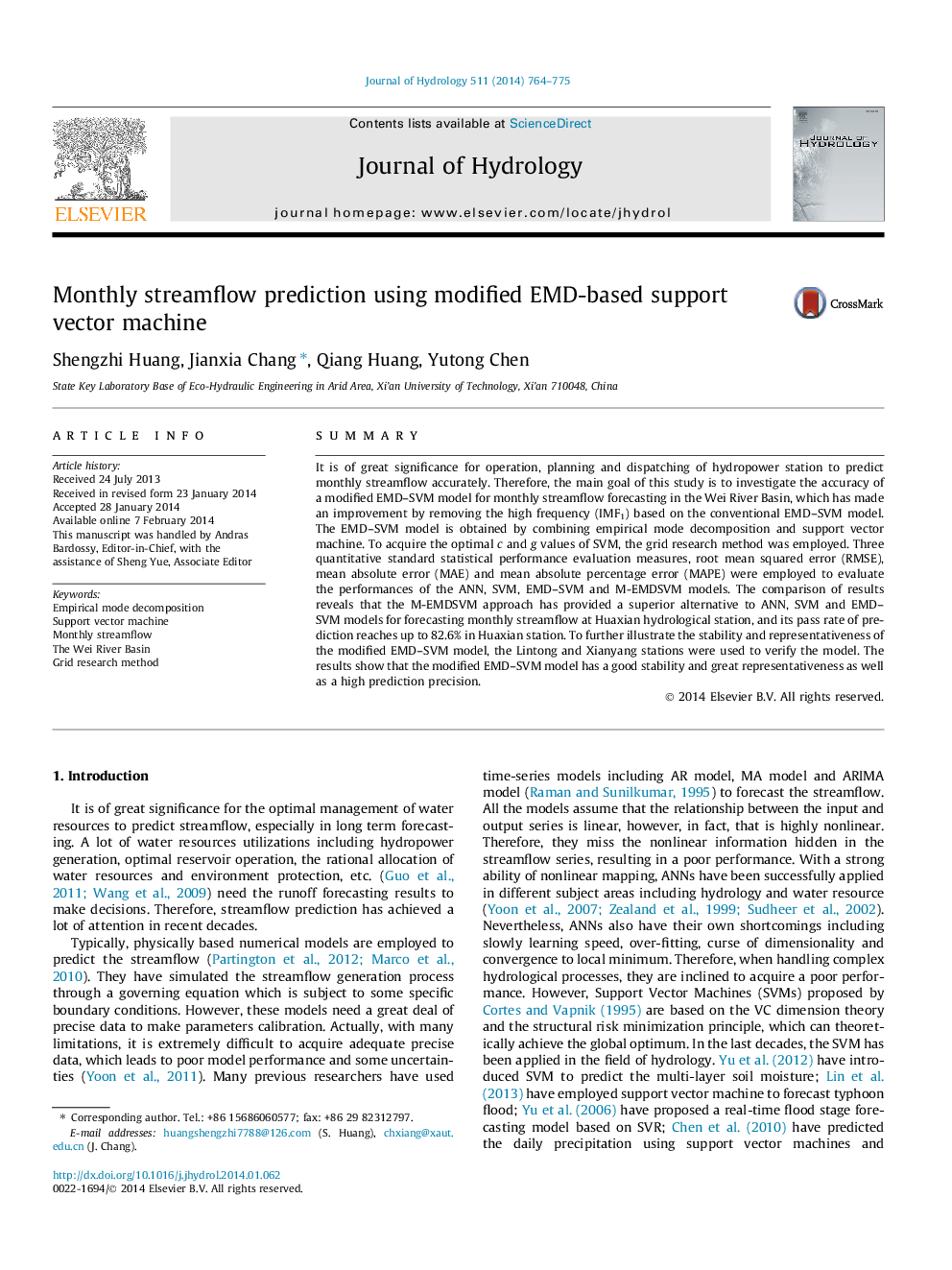| Article ID | Journal | Published Year | Pages | File Type |
|---|---|---|---|---|
| 6413352 | Journal of Hydrology | 2014 | 12 Pages |
â¢A modified EMD-SVM model improved by removing the IMF1 is proposed.â¢The grid research method is employed to acquire the optimal parameter of SVM.â¢The EMD-SVM model has a better performance than the basic SVM model.â¢The M-EMDSVM model outperforms the SVM and EMD-SVM models.
SummaryIt is of great significance for operation, planning and dispatching of hydropower station to predict monthly streamflow accurately. Therefore, the main goal of this study is to investigate the accuracy of a modified EMD-SVM model for monthly streamflow forecasting in the Wei River Basin, which has made an improvement by removing the high frequency (IMF1) based on the conventional EMD-SVM model. The EMD-SVM model is obtained by combining empirical mode decomposition and support vector machine. To acquire the optimal c and g values of SVM, the grid research method was employed. Three quantitative standard statistical performance evaluation measures, root mean squared error (RMSE), mean absolute error (MAE) and mean absolute percentage error (MAPE) were employed to evaluate the performances of the ANN, SVM, EMD-SVM and M-EMDSVM models. The comparison of results reveals that the M-EMDSVM approach has provided a superior alternative to ANN, SVM and EMD-SVM models for forecasting monthly streamflow at Huaxian hydrological station, and its pass rate of prediction reaches up to 82.6% in Huaxian station. To further illustrate the stability and representativeness of the modified EMD-SVM model, the Lintong and Xianyang stations were used to verify the model. The results show that the modified EMD-SVM model has a good stability and great representativeness as well as a high prediction precision.
